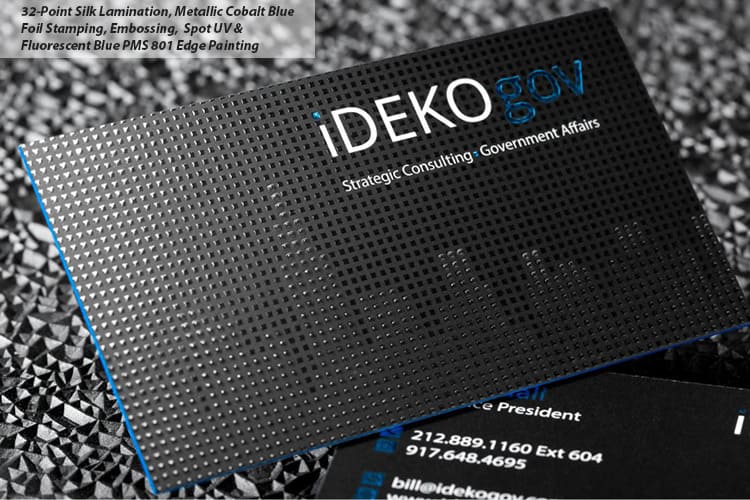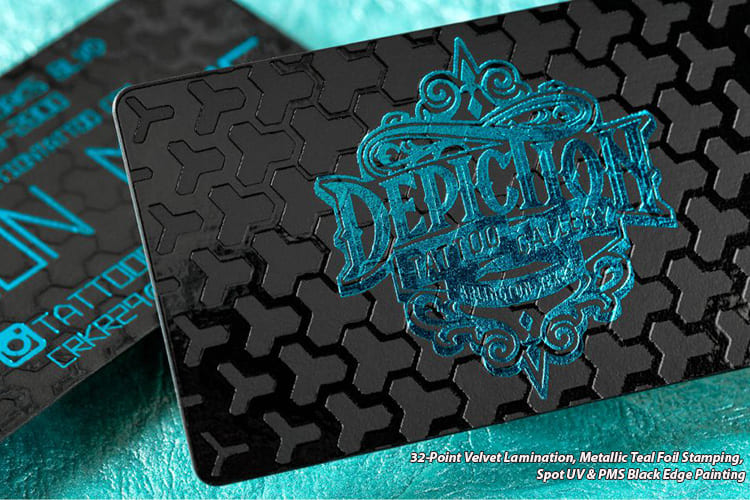Embossed cards are tactile to the touch and visually appealing. This property helps to create a lasting impression on your audience and sets you apart from regular businesses. But do you wonder how to make Embossed business cards? This article has the answers.
Understanding Embossed Business Cards: What Sets Them Apart
We make Embossed cards by stamping the card stock with a die. This die is a metal plate that has been precisely cut to mirror the elements of the design that will be embossed.
This process creates a recessed or raised three-dimensional effect on your business card. The procedure is often used to highlight your brand's name or logo. These cards are special for several reasons, namely:
- Tactile experience: The raised elements on the card help create a 3D-like effect that recipients can feel as they run their fingers over the design. This experience adds luxury and sophistication to your business card and brand.
- Visual appeal: Embossed design stands out and adds elegance to your card. The effect beautifully highlights important details of your design.
- Perception of quality: Customers associate Embossed cards with quality and attention to detail. As a result, your brand image benefits from this association with value and excellence. This perception of quality is critical when selling high-end products or services to upmarket clients.
- Differentiation: Regular-looking cards may fail to leave a mark when you hand them out at networking events. But an Embossed business card increases your likelihood of being noticed and remembered.
- Enhanced branding: Raised elements can emphasize key elements of your brand, such as your name, logo, or tagline. Such memorable branding helps you become well-known and trusted.
We’d now see how to make Embossed business cards.

How To Make Embossed Business Cards?
Creating your own Embossed business cards may seem daunting, but we've simplified it so you can enjoy effortless recognition with these 3 steps:
-
Create a business card design
-
Select the embossing option on the Extreme Custom Business card page
-
Upload your design to order
A simple design often works best for the effect. So try not to clutter your card or include outlandish design elements. Instead, focus on the key information you wish to highlight. But how do you ensure you choose the right paper and cardstock for the design?
Choosing the Right Paper and Cardstock for Embossed Effects
Embossing is available in thicker paper stock: 32pt Silk Laminated, 48pt Silk Laminated, 32pt Velvet Laminated, and 48pt Velvet Laminated. Simply choose the thickness and finish that suits you on our Extreme Custom Business product, and we'd apply the chosen paper type.

Embossing Techniques
There are 2 commonly used embossing techniques:
-
Blind embossing, and
-
Foil embossing.
Blind embossing: This technique does not utilize colors or foils to highlight the raised effect further. As a result, blind embossing has an elegant and subtle look. This option is perfect for minimalist designs.
Foil embossing: This combines the application of metallic or colored foils to the raised effect. Thus, creating a lustrous and eye-catching business card design that’s luxurious and outstanding.
Conclusion
For those diving into the world of professional networking, business cards remain a fundamental tool. Not only does it convey your contact information, but it also reflects your brand's identity and professionalism. If you're keen on crafting a business card that stands out, our comprehensive guide on how to make business cards provides in-depth insights and creative ideas. Whether you're exploring the basics or seeking innovative designs, these resources offer invaluable tips to ensure your business cards make a lasting impression.
Now you know how to make embossed business cards and how effective they can be. We help you create stunning and unique cards that will captivate and impress any audience.

